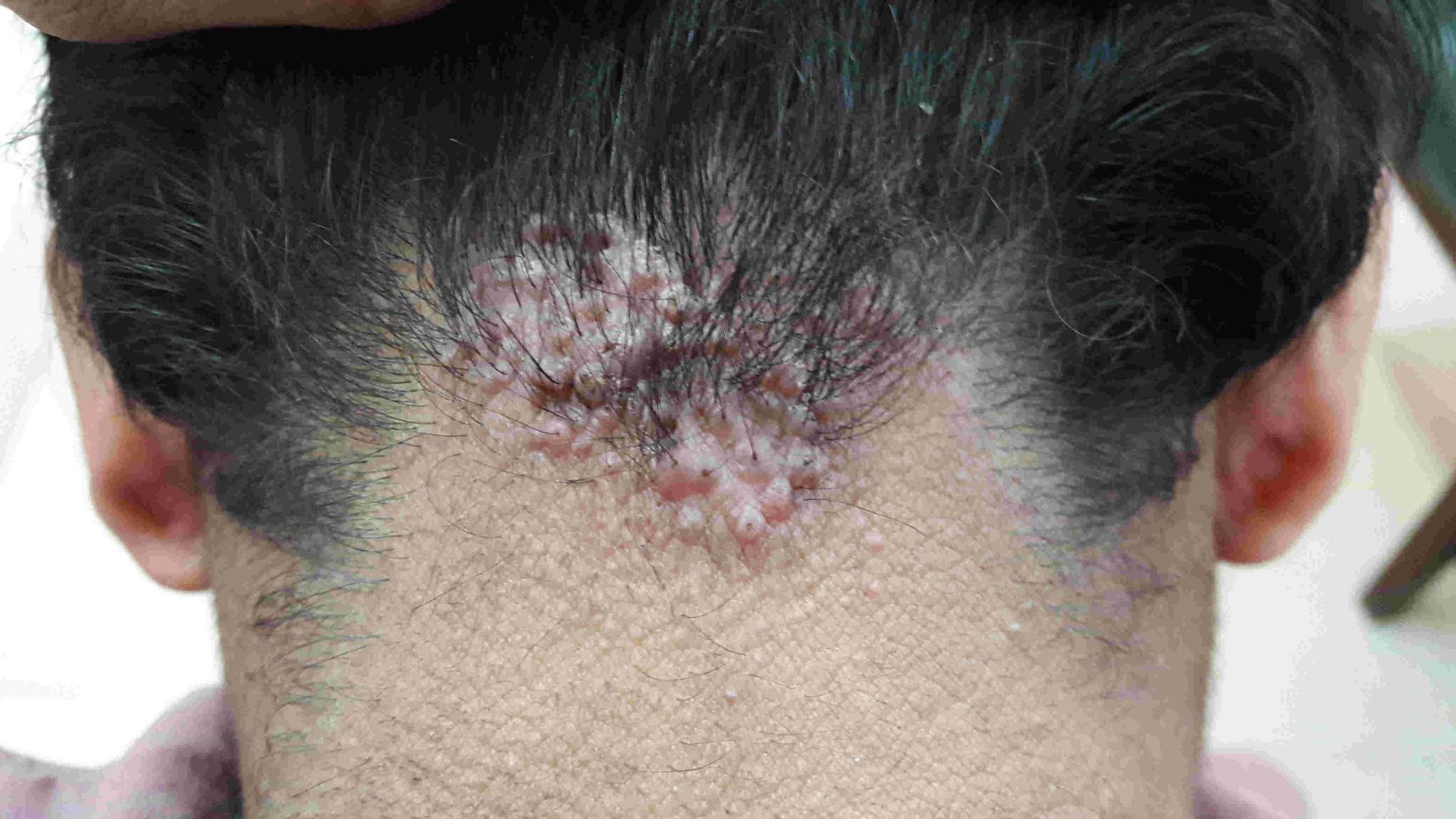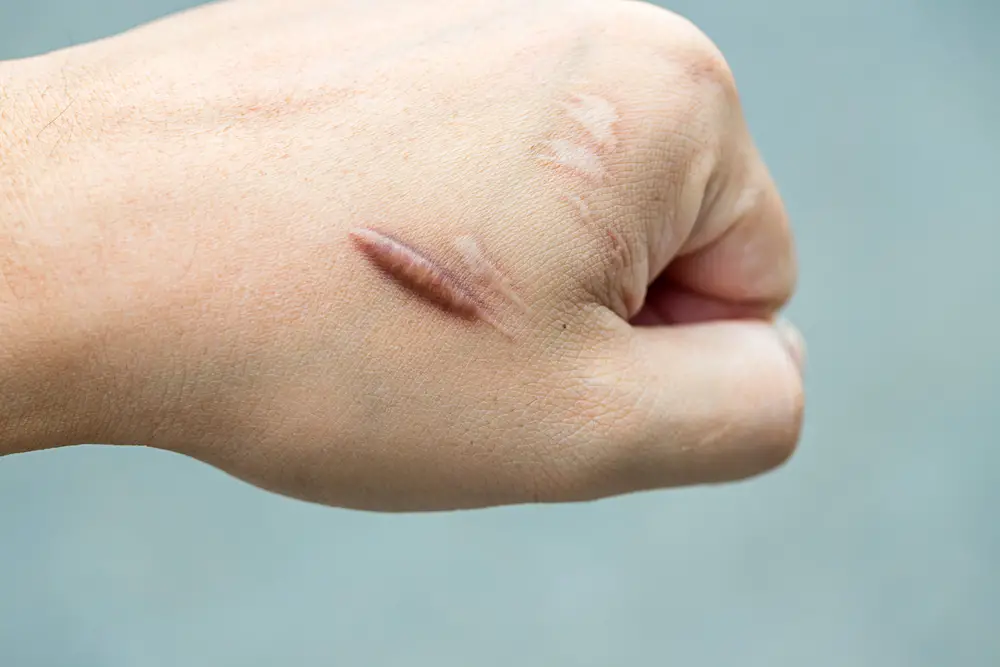The hair is essential coverage for the head and other parts of the body. Losing hair can cause psychological distress, especially for those who cherish hair on their body. So many factors could cause hair loss (called alopecia in medical parlance). It could be a hereditary, medical condition, hormonal change, or the aging process. Acne keloidalis is one of the conditions that can cause hair loss from certain parts of the head.
Acne keloidalis is a skin condition that affects the scalp, especially at the nape of the neck or side of the head. It starts small, and then, with time, it starts getting bigger, itchy, and irritable. If not properly handled, it can account for permanent loss of hair. Hair loss does not happen immediately; it occurs when the condition has moved from mild to chronic.
Can Acne Cause Hair Loss?
Acne is a skin condition that causes inflammation on the face, arm, back, chest, and even head. It could be found anywhere as far as there’s skin. Since your scalp is skin, your scalp can be prone to acne just like any other part of your body. Scalp acne can occur when the hair follicle gets blocked by dirt, bacteria, and even oil, and all these happen when;
- The sebaceous gland is secreting excess oil.
- Dandruff and dead skin build-up on your scalp, therefore blocking the pores.
- Lack of proper and regular washing of the hair could cause sweat accumulation hence, blocking the pores.
Scalp acne could cause permanent hair loss if not adequately treated.
What Is Acne Keloidalis?
Acne keloidalis is a medical condition that is caused by inflammation of the hair follicle. It starts very mild but could disfigure the scalp, thereby irritating to the skin. The overall effect is irritation and then hair loss in the affected area if the condition deteriorates.
Acne keloidalis nuchae aka AKN, is also known as folliculitis keloidalis nuchae. The nuchae in the name refer to the nuchal area of the scalp where this condition commonly occurs. Although it is not a form of acne, it is usually mistaken for one. It usually starts as bumps and then starts to itch and, eventually, gets bigger and irritating.
Men are more at risk of this condition primarily because they cut their hair low while women plait theirs. A few days after barbing, there could be a papule on the scalp, and from just one, it could lead to some others growing. Barbing of hair and shaving of beard is inevitable for men. Therefore, it is advisable to use shaving cream after barbing and avoid stretching of the skin while shaving.
This disease tends to affect African men more. It also affects a few Caucasians and a few ethnic groups. The treatment could be challenging as it might be resistant to treatment.
Though prevalent, only a few persons tend to seek medical attention from hospitals. They only tend to visit the hospital when the wound becomes too painful and unbearable. Many people resort to self-help using poorly informed remedies such as car engine oils and acids to remove the bumps, but these instead do more harm than good as treatment with acids can also result in larger lesions.
Although the cause of acne keloidalis nuchae is unknown, symptoms start to show within hours and days after a haircut. It starts mildly but may become chronic if left untreated or poorly managed. Proper education is needed to know how to handle this disease.
What Causes Acne Keloidalis?
The actual cause of this medical condition is unclear. So many factors have been suggested as the cause of this disease, and they include:
- Irritation from coarse and curly hair leads to inflammation and the growth of lesions.
- The kinky and curly nature of African men’s hair makes them more susceptible to this disease.
- Irritations by shirt collars.
- Injuries during short haircuts.
- Low-grade bacterial infections.
- Other factors that have been suggested to be the cause include; obesity, metabolic syndrome, and certain medications.
It is, however, important to state that none of these theories has so far been proven. They are just based on observations.
Can Acne Keloidalis Disappear?
Though there’s no known cure, it can be managed if it is adequately treated at the preliminary stage. It becomes resistant when the bumps spread on the scalp and seem to grow bigger.
Effects Of Acne Keloidalis
The effects of acne keloidalis may include the following:
- It could destroy the hair follicle, thereby causing scarring.
- It can be challenging to treat. When the bumps become big, it can be resistant to treatment, and it could even lead to surgery.
- Treatment may be capital intensive, especially when it has become chronic.
- It could disfigure the shape of the head of the one having this disease, especially when the bump has gotten bigger and has refused to reduce in size.
- It could affect the self-esteem of the one with this condition.
How To Treat Acne Keloidalis?
It is essential to manage this disease so that it doesn’t deteriorate. It generally starts as a pimple but may soon graduate into lesions, which is likely to happen when it is poorly treated. Self-help is not the best way out. Deploying poorly informed remedies may worsen the condition rather than making it better.
Treatment is best administered at the diagnosis point because this helps to nip it in the bud and prevent it from increasing and becoming resistant to medications. A medical practitioner may recommend using certain over-the-counter soap and shampoo when the papule is still very mild.
Seeing it’s a bacterial infection, the doctor may also prescribe one or more of the following:
- Oral antibiotics for the infection.
- Steroids to rub on small papules (spot similar to a pimple but lacks pus).
- Steroid injections for large papules.
In a situation where the infection becomes worse, and the scars seem to be getting bigger, surgery becomes the option to embrace, and this is because failure to carry out surgery at this point could leave a permanent-growth on the scalp of the patient, which can affect the physical shape of the head and have an effect on the psychological state of such individual. It is, therefore, essential to seek knowledge on how to manage the infection properly.
How To Manage Acne Keloidalis?
Though there’s no known cure presently but this condition can be well-managed.
- Endeavor to wear collarless shirts and jackets as this will prevent rubbing against the back of your neck. Shirts with a collar may come in contact with the nape of your neck causing further irritation to your skin.
- Ensure always to keep the nape of your neck clean and dry and always try to clean gently as this also helps prevent irritation.
Steps To Preventing Acne Keloidalis
Prevention is the best way to go, and that’s the place of knowledge. It helps to be kept abreast of the likely triggers and how to avoid them.
- Maintain good hygiene by using chlorhexidine or benzoyl peroxide-based cleansers/shampoos for your hair. It helps to prevent bacterial infection and protect your skin against this disease.
- Avoid aggressive hair shaving (pulling the skin to get rid of every hair strand).
Difference Between Acne And Acne Keloidalis
Acne keloidalis is not a type of acne. The two are different in that acne keloidalis tends to grow at the nape of the neck, but as for acne, it can occur on any part of the head.
Difference Between Keloids And Acne Keloidalis
According to drugs.com, ‘’keloids are raised overgrowths of scar tissue that occur at the site of a skin injury. They occur where trauma, surgery, blisters, vaccinations, acne, or body piercing have injured the skin. Less commonly, keloids may form in places where the skin has not had a visible injury. Keloids differ from normal mature scars in composition and size. Some people are prone to keloid formation and may develop them in several places.”
Whereas, acne keloidalis is a growth at the nape of the neck or back of the head. While keloid can grow anywhere on the skin, acne keloidalis grows only at the nape of the neck or back of the head. The bumps could become enlarged and look like a keloid.
Conclusion
Acne keloidalis is a health condition that can be managed appropriately, and if this is done, hair loss can be prevented. Hair loss has a way of taking a toll on our psychological state, hence our first endeavor should be to prevent AKN from occurring. However, once it has occurred, it is best to seek medical help before the problem turns chronic.
In this series:
- Can Acne Keloidalis Go Away? What You Need To Know
- Can Acne Kill You? What You Need To Know
- Can Acne Cause Swollen Lymph Nodes?
Related post: Is It Normal To Have Acne?

